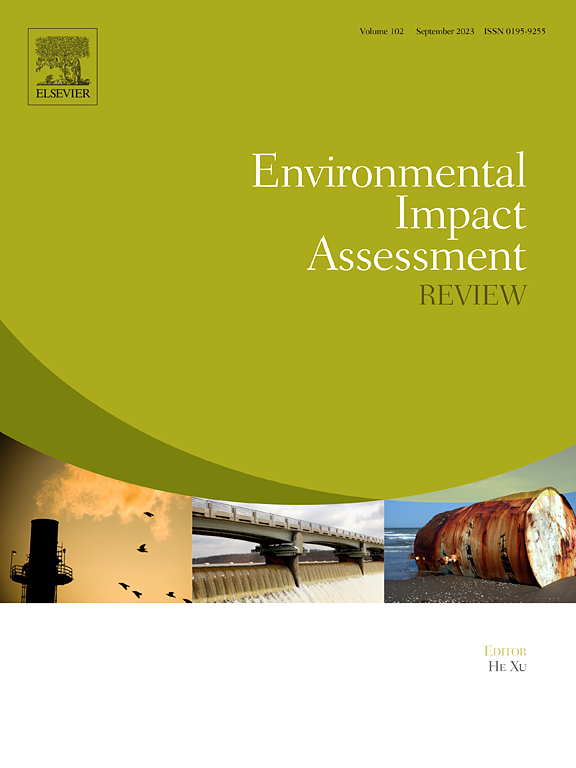Exploring substantive SEA effectiveness: A critical review of plan environmental impact assessment (PEIA) in Chinese urban planning
IF 9.8
1区 社会学
Q1 ENVIRONMENTAL STUDIES
引用次数: 0
Abstract
Plan Environmental Impact Assessment (PEIA), introduced in China in 2003 as the main form of Strategic Environmental Assessment (SEA), has now been practiced for over two decades. However, systematic empirical research evaluating substantive effectiveness and its underlying drivers has remained scarce. This gap is problematic, as China is currently undertaking a major reform to unify land use, urban, and ecological plans under a national territorial planning framework. In this paper, the authors evaluate the substantive effectiveness of PEIA in urban planning through nine cases across five cities: Shenzhen, Nanjing, Fuzhou, Kunming, and Lanzhou. A comprehensive approach, including stakeholder interviews, site inspections, and document analyses was employed. Results indicate that, regarding direct impacts, although there are exemplary cases such as the urban master plans of Shenzhen and Nanjing where SEAs positively influenced decisions and planning, many cases fail to significantly affect strategic planning decisions. However, indirect impacts such as enhanced decision-makers environmental awareness and improved organizational cooperation and communication have been observed consistently, though their broader influence on institutional norms and stakeholder collaboration remains limited. Identified barriers, such as late-stage integration, weak stakeholder participation, institutional constraints, and poor interdepartmental coordination, limit PEIA's direct and indirect roles in shaping strategic planning.
探索策略性环境影响评估的实质性有效性:中国城市规划中规划环境影响评估(PEIA)的批判性回顾
规划环境影响评价(PEIA)作为战略环境评价(SEA)的主要形式于2003年引入中国,至今已有二十多年的实践经验。然而,评估实质性有效性及其潜在驱动因素的系统实证研究仍然很少。这种差距是有问题的,因为中国目前正在进行一项重大改革,将土地利用、城市规划和生态规划统一到国家国土规划框架下。在本文中,作者通过深圳、南京、福州、昆明和兰州五个城市的九个案例来评估PEIA在城市规划中的实质性有效性。采用了一种全面的方法,包括利益相关者访谈、现场检查和文件分析。结果表明,在直接影响方面,虽然存在深圳和南京城市总体规划等典型案例,但许多案例对战略规划决策没有显著影响。然而,不断观察到决策者环境意识增强和组织合作与沟通改善等间接影响,尽管它们对机构规范和利益相关者协作的更广泛影响仍然有限。已确定的障碍,如后期整合、利益相关者参与薄弱、制度约束和部门间协调不力,限制了PEIA在制定战略规划方面的直接和间接作用。
本文章由计算机程序翻译,如有差异,请以英文原文为准。
求助全文
约1分钟内获得全文
求助全文
来源期刊

Environmental Impact Assessment Review
ENVIRONMENTAL STUDIES-
CiteScore
12.60
自引率
10.10%
发文量
200
审稿时长
33 days
期刊介绍:
Environmental Impact Assessment Review is an interdisciplinary journal that serves a global audience of practitioners, policymakers, and academics involved in assessing the environmental impact of policies, projects, processes, and products. The journal focuses on innovative theory and practice in environmental impact assessment (EIA). Papers are expected to present innovative ideas, be topical, and coherent. The journal emphasizes concepts, methods, techniques, approaches, and systems related to EIA theory and practice.
 求助内容:
求助内容: 应助结果提醒方式:
应助结果提醒方式:


